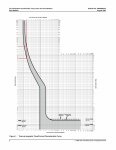J.L. Swift
Member
- Location
- Plymouth, MA
- Occupation
- Electrician
How long would a 15amp breaker hold at 24.55 amps ? There is a post on the electricians only group of an electrician holding an amp clamp on a 14 gauge wire to a 15amp amp breaker for at least a minute and it is not tripping. Is the breaker bad ?



